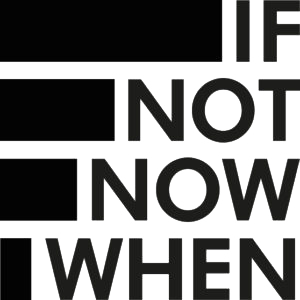Burnout is a systemic issue.
Burnout manifests differently for everyone but it can look like self-doubt, procrastination, feeling helpless or overwhelmed, a negative change in mood and feeling drained and tired.
Do any of these symptoms sound familiar? With evidence suggesting that 76% of US workers and 79% of employees in the UK have experienced burnout, it’s likely that you and your employees have experienced it too, and likely more than once.
In February 2023 we held a roundtable with PVL to discuss how DEI professionals can learn to recognize signs of burnout and use personal management techniques to keep burnout at bay . While having the tools to mitigate for personal burnout is crucial, it is too often ignored that burnout amongst employees is a systemic issue which needs to be solved. In this article we’ll be sharing why it’s critical for CEOs and C-Suite leaders to spearhead initiatives that solve burnout at the root, and what these initiatives look like in practice.
While burnout is a huge, multi-faceted challenge, it is ultimately a business issue that needs correcting. Without seeing how certain organizational systems and processes are either the cause of employee-wide burnout or, at the very least perpetuate the issue, burnout amongst employees will continue, as will its’ consequences.
Resetting cultures through data
Transforming workplaces cultures is key to uprooting burnout. This might sound like an unmanageable and almost impossible undertaking as we are so used to working in one way but making tangible, incremental changes to an organizational culture will make all the difference in the long-term.
A great way to determine the levels of burnout in your organization, and how it has affected or continues to affect your employees is by asking them. This can be done through deploying anonymous company-wide surveys, tooling people managers with the skills to be able to discuss issues around burnout and wellbeing and creating a benchmark for progress by assessing current sentiment via focus groups and townhalls.
Gathering data as part of wider DEI strategies is crucial, and these tools can also be deployed to help determine root causes for burn out. There are intersectional elements to consider, as evidence shows diverse employees are more likely to suffer from burnout, and gathering this data can also help unearth how your women and diverse employees may face broader disadvantages within the business connected to wellbeing.. Other factors such as income, generation and class can also be a factor, and being able to gauge the way these intersections may affect the rate of burnout and how a business may contribute to it, is valuable intelligence when it comes to targeted interventions.
Encourage boundary setting
With the advent of remote and hybrid working and the heightened political and social justice climate has come a natural blurring of home-work boundaries. Therefore, C-Suite leaders are key in visibly role modelling and vocalizing a business’ expectations around work-life balance and what is appropriate and not when it comes to employee work behaviors.
For example, do your employees have clarity on:
- Your organization’s expectations around working hours
- Your organization’s expectations around employee visibility at informal social events
- Support processes for wellbeing within the business?
It is likely that there are informal, or once-mentioned formal rules on the above however, reiteration is critical. This can be done through encouraging people managers to have conversations with employees around setting their own boundaries and role model behaviors from the top down that encourage employees to take ownership of their own time and work load.
It’s equally important to consider how adhering to strict work-life balances can disadvantage employees, through no fault of their own. For example, if parents within your company are unable to attend social events in the evening due to child care responsibilities but affinity bias is a factor in promotional decisions, these employees will lose out. Therefore, viewing how dimensions of bias exist within concepts like boundary setting, work-life balances and agreed upon non-negotiables should also be considered when thinking about why some employees may find themselves more burnt out than others.
Burnout is bad business sense
With Gen Z moving into the workplace and being more steadfast in their beliefs around work-life balance, organizations that aren’t prioritizing their employees’ wellbeing and who don’t see burnout as an issue to be tackled, risk losing out on talent.
Burnout is not exclusively a concern to stamp out for future generations either as 70% of C-Suite leaders have considered quitting their jobs for one that better caters to their wellbeing. Businesses therefore risk losing out on talent across all levels of the business which will detrimentally affect performance and meaningful diversity in senior leadership teams. In short, burnout is bad for business and will stunt employee engagement, a business’ growth and innovation.
Businesses serious about addressing burnout and recognizing it as an impediment to overall growth, are the ones who will prosper in the long-term, powered by a productive and engaged workforce. While overhauling an entire business system is impractical, starting by assessing your employees perspectives and levels of burnout, implementing strong support processes that go beyond ‘taking a wellbeing day off’ and ensuring that these processes are improved upon on a continuous basis is crucial to sustainably making burnout a thing of the past.
Ultimately, CEOs and C-Suite leaders have a responsibility to ensure that their employees are thriving within a psychologically safe environment. Not recognizing and prioritizing the business risks associated with widespread burnout risks harming the whole organization and its overall success.




